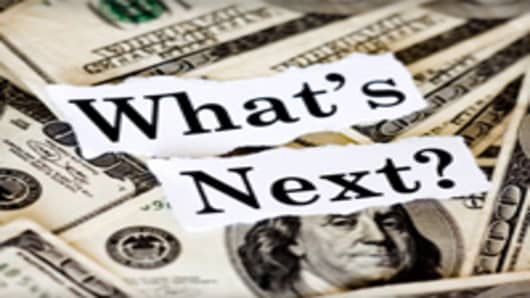Friday's better-than-expected jobs report, while cheering stock investors, hasn't taken the threat of a double-dip recession off the table.
Even as the jobless rate held steady at 9.7 percentand the 36,000 workers laid off in February was much less than expected, economists and investment analysts said it's still too early to discount the economy's chances of revisiting recession.
"Eight months into the much-touted recovery, the economy should be adding jobs not just losing jobs at a slower pace," University of Maryland economist Peter Morici wrote in an analysis.
"No study of economic history could yield a conclusion other than that the US economy (walks) along the precipice of a double dip recession."
There were two ways to view the Friday jobs report, and Wall Street clearly chose the more optimistic.
Uncertainty over the impact of this season's brutal weather pattern had caused wide disparities in projections, with most economists around the 75,000 mark but some whisper projections as high as 200,000.
When the actual number came in better than even the most optimistic projections, recovery backers cooed that the jobs market was showing clear signs of improvement and perhaps only a month away from positive job growth. Investors sent the major stock averages up nicelyafter a somewhat lackluster week.
"Going into today's report, we had expected that the big winter storms that hit the East Coast during the job survey might have cut into the job gain," Nomura Securities chief economist David Resler wrote. "Overall, we see these data as broadly encouraging and consistent with the judgment that private sector businesses will soon be adding consistently to their payrolls."
Not everyone was as quick to claim victory, though.
Staffing industry executives told Reutersafter the numbers were released that while the trends were encouraging that workers will be added as the years go on, real job growth is likely even then to be slow and will have only a marginal impact.
That's precisely what worries the double-dip camp—that slow growth at some point will reignite fears over the economy and itself lead to another drop.
"Do I sense from clients that they're confident there's no possibility of a double-dip? I'd say no," said Tig Gilliam, who heads North American operations at Adecco, the world's biggest staffing group and one of the nation's biggest employers after the Postal Service and Wal-Mart . "That's why we're seeing the caution."
Bill Gross, co-CIO at Pimco, where he helps run the world's largest bond fund, said issues with "structural unemployment," or lack of demand for available workers, will bedevil the economy as well.
Pimco has coined the term "new normal" for its projections of slow growth—that stop short of a double-dip prediction—and Gross reiterated in an interview with CNBC that the economy is stuck in a cycle that will take years, not months, to break.
Economist Michael Pento, of Delta Global Advisors in Parsippany, N.J., said the better-than-expected jobs number was boosted primarily by the 15,000 Census workers hired and does nothing to mask what he considers the near-certainty that the second half of the year will see another leg down for the economy.
"We still haven't created any jobs. They can't get any loans, their incomes are down and they face much higher taxes in 2011 and higher interest rates," Pento said in an interview. "I don't know why anybody would think anything else. If I'm wrong I'll fall down and build a shrine to John Maynard Keynes."
Indeed, positive job creation is likely to take effect in the coming months because of the Census, but will reverse once the population count is over, Pento said.
The lack of job creation two and a half years after the Federal Reserve began cutting interest rates bolstered the case for those who see more trouble ahead.
"If the best the US labor market can do is printing modestly negative headline payroll reports at this stage of the cycle, one has to wonder how these numbers will look going forward barring either an acceleration in private final demand or a collapse in productivity growth," wrote Gluskin Sheff economist David Rosenberg in his daily note.
For investors, the times ahead could be cloudy as the market looks to break out of the trading range in which it has been mired for most of 2010.
Gross predicted the Fed will have to double-back and restart some of its programs when the economy falters.
That view is shared among some portfolio mangers who worry that the biggest threat of a double dip is the Fed taking away its proverbial punchbowl too quickly.
"It really comes down to the government spending. As long as the government continues to spend we'll continue to grow," said Doug Roberts, chief investment strategist at Channel Capital Research in Shrewsbury, N.J. "The real big danger is stimulus interruptus, which is that (the government will think) all of a sudden we don't need this anymore so we cut back but don't have any fundamental reform to deal with it."
Roberts recommends a "three-bucket" plan of cutting back on speculative positions, reducing debt, and holding to long-term strategies.
Rosenberg advocates a five-pronged strategy: Focusing on safe yields, reliable dividend growth, companies with low debt to equity ratios, being highly selective with financials and retailers, and companies with low fixed costs, high variable costs, high barriers to entry, and sustainable demand.
"It's going to feel like a very severe recession once again," Pento said. "There's going to be very little job growth and it's going to feel like the new normal."



